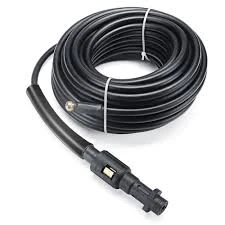Build Your Own Power Steering Hose - Custom Solutions for Your Vehicle
Build Your Own Power Steering Hose A Comprehensive Guide
Power steering systems are crucial components in modern vehicles, providing drivers with the ease of steering. Over time, the power steering hose can wear out, leading to leaks and inefficient steering. While many car owners resort to buying pre-made hoses, building your own power steering hose can be a rewarding and cost-effective solution. In this guide, we’ll cover the steps and materials needed to create a reliable power steering hose.
Materials Needed
To build your own power steering hose, you will need
1. Power Steering Hose Kit These kits typically include various length hoses, fittings, and adapters that can be tailored to your vehicle’s specifications. 2. Hose Clamps These are important for securing the hose to the fittings. 3. Cutting Tool You will need a suitable cutting tool to ensure clean cuts on the hose. 4. Wrench Set For tightening fittings and clamps. 5. Ruler or Measuring Tape To measure the necessary hose length accurately. 6. Fluid Compatible with Power Steering Systems Ensure that the fluid you choose is suitable for your car's power steering system.
Step-by-Step Construction
1. Preparation Before you start, make sure to gather all your materials and tools. Park your vehicle on a flat surface and allow the engine to cool down. It’s important to work in a well-ventilated area.
2. Measure the Required Length Use your ruler or measuring tape to measure the distance between the power steering pump and the steering gear. Make sure to consider any curves or bends the hose must make.
3. Cut the Hose Using the cutting tool, cut the hose to the measured length. Ensure the cut is straight to prevent future leaks.
build your own power steering hose

4. Attach Fittings Depending on your kit, you might need to attach fittings to the ends of the hose. Make sure these fittings are compatible with your vehicle's fittings. Secure the fittings using a wrench, ensuring they are tight but not over-tightened to avoid damage.
5. Install Hose Clamps Once the fittings are attached, slide the hose clamps over the ends of the hose. Position the clamps as close to the fittings as possible for maximum security. Tighten the clamps with a wrench to hold the hose firmly in place.
6. Connect the Hose Begin by attaching one end of the hose to the power steering pump and the other end to the steering gear. Ensure that all connections are secure and leak-free.
7. Fill with Power Steering Fluid Once everything is connected, fill your power steering reservoir with the appropriate fluid. Refer to your vehicle’s manual for the correct type.
8. Bleed the System Start the engine and turn the steering wheel from lock to lock a few times. This will help remove any air bubbles in the system. Check for leaks during this process and tighten any loose connections if necessary.
9. Test Drive Finally, take your vehicle for a test drive. Pay attention to how the power steering feels and check for any leaks after your drive.
Conclusion
Building your own power steering hose can be a straightforward and fulfilling task. Not only does it save you money, but it also gives you the satisfaction of taking charge of your vehicle's maintenance. With the right materials and careful attention to detail, you can ensure that your power steering system operates smoothly and efficiently for years to come.
-
Ultimate Spiral Protection for Hoses & CablesNewsJun.26,2025
-
The Ultimate Quick-Connect Solutions for Every NeedNewsJun.26,2025
-
SAE J1401 Brake Hose: Reliable Choice for Safe BrakingNewsJun.26,2025
-
Reliable J2064 A/C Hoses for Real-World Cooling NeedsNewsJun.26,2025
-
Heavy-Duty Sewer Jetting Hoses Built to LastNewsJun.26,2025
-
Fix Power Steering Tube Leaks Fast – Durable & Affordable SolutionNewsJun.26,2025

